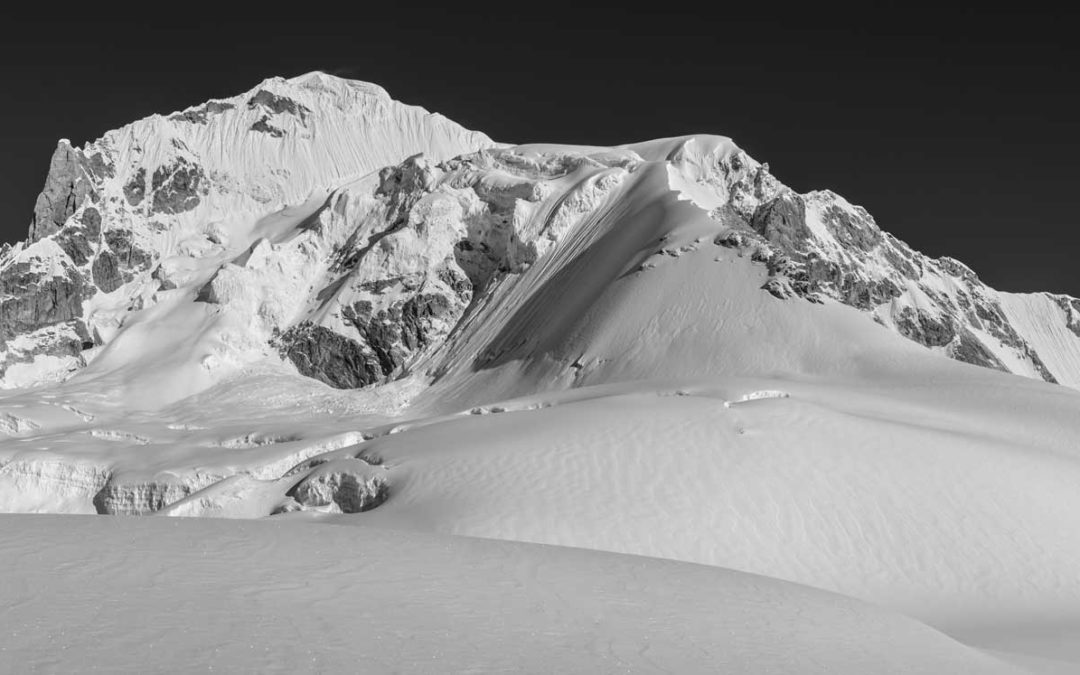Everest Base Camp
April 12, 2007
Namaste,
We still have no power at Everest Base Camp, so I’m sending this report by satellite phone. If it seems disorganized, I apologize.
On April 7 we trekked from Lobuche to Gorak Shep (16,300 ft). When we arrived in Gorak it started to snow, so there was no opportunity to climb Kalla Pattar for great views of Everest, but the accommodations at Gorak Shep were great, which was our last day in a teahouse.
On April 8 we trekked to Everest Base Camp (17,100 ft.).
The weather has been cold and windy and it has snowed almost every day.
Our trip leader, Dan, described Everest Base Camp as the worst base camp in the world. He is probably right. It is a large tent city that sits on rolling piles of boulders and rocks with no flat areas.
You have to use large pickaxes to create tent platforms upon which to pitch your tents, and it’s still not flat no matter how hard you try. For example, I sleep downhill and am constantly sliding down to the bottom of the tent during the night and have to push myself back up to the top and repeat this process throughout the night.
The rocks and boulders sit on glacial ice which moves slowly down the mountain each day. You can hear the glacial ice creak and groan at night. You can also hear water flowing under the ice. According to my son, the ice at the bottom of the glacier is melted due to the pressure caused by the glacier’s sheer weight, which enables the glacier to slowly slide down the mountain, grinding down rocks and boulders along the way. At night when the heat from the tent interacts with the ice under the tent, it causes loud noises like pop, bam, crack, pow.
At night you can also hear avalanches and rock and ice falls thunder down the mountain, which surround the Base Camp. We still have no power, so we eat dinner by candlelight in the mess tent that is pitched on the rocks.
I took a shower today in the shower tent while it was snowing.
Yesterday we went on an acclimatization hike to Advance Base Camp at Pumar Mountain (also known as Pumori Mountain), which is at 18,460 ft. It was a very long and strenuous day and it snowed the whole way. The snow turned into a snow storm on the way back.
We had some great views however from Pumar and there were many good photo ops.
Today has been a rest day. We had another Puja ceremony, this time outdoors. A 65 year old Lama blessed our group and blessed the climbing equipment which was brought to the ceremony.
Tomorrow we will hike back to Pumar and sleep overnight, all for acclimatization purposes. Then we will take two days rest at Everest Base Camp.
The Khumbu Icefall is awesome and fearsome. It consists of large jumbled blocks of ice called seracs, some that are several stories tall. These seracs are constantly moving. This is the most dangerous part of the mountain.
The Khumbu Icefall is much larger than I thought. The route has been fixed by lines and ladders that are set up by “icefall doctors” who are government employees hired for this purpose. Camp 1 on Everest is just above the icefall.
I feel great and am eating and sleeping well. I find it hard moving uphill at this altitude, but I move slowly and steadily.
Everyone is doing fine. We have a great group. Two new members (Bruce and Phil) arrived today and one additional member will arrive in the next couple of days.
My young and super strong Sherpa – who I sometimes affectionately refer to as Arnold Schwarzenegger – has been a great friend and help to me.
Bill Burke

